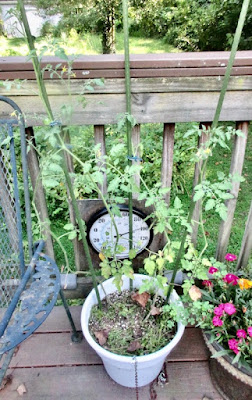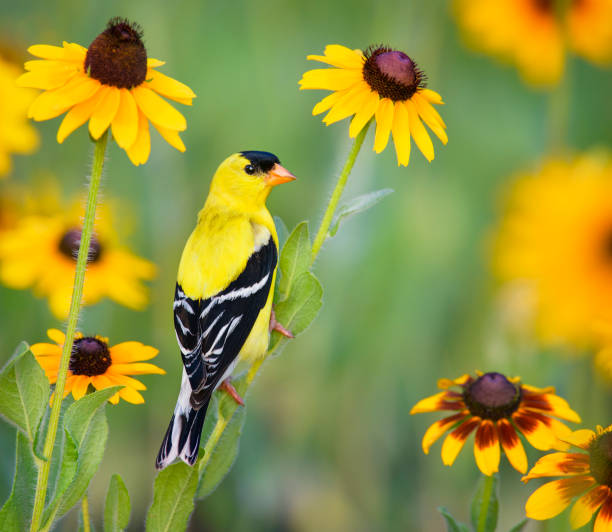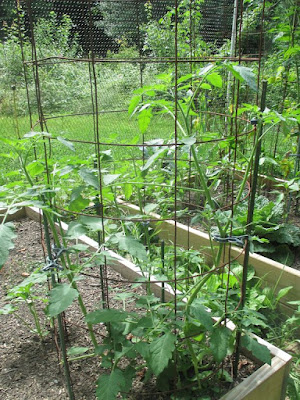Sort of continued from yesterday...
Aside from the heat pump problems, I've had damaged/loose tiles around the bathtub for almost a year. At first, I couldn't get any highly-rated company on Angie's List to come out. The job was too small. Then it gradually got too big. Them I couldn't get a bathroom remodeler to come out because the job was too small.
I have a plastic trash bag duct-taped over the loose tiles. Well, it FINALLY got big enough of a problem for one remodeler to come look Wed. Quite frankly, I hadn't looked under the plastic covering lately, and it was worse than I thought.
I expected bad news and I got it! Now let me mention that this "starter house" (where I have lived for 30 years) was not the best-built of houses. The builder took shortcuts all over the place. Apparently, one of those shortcuts was around the bathtub. The seal around the tub faucet was leaky, the tile was poorly applied, the grout cracked, and the wall behind the tiles was truly waterproof.
The remodeler popped one seemingly sound tile right off and pushed an awl right through the wall behind it. Everything seem rotted... So he came by yesterday with a basic proposal, subject to change after they remove the tiles and see behind the wall.
They propose to remove all the tiles, replace the backer board wall, repair some damaged drywall, replace the tub faucet and showerhead (upper tile loosening suggests it is leaking inside the wall), and re-tile higher than it currently is (which is below the showerhead). And replace the bathtub itself.
I asked about why to replace the bathtub, and he said that, at 30 years old my cheap one won't last much longer and it would require pulling off the new tiles and some drywall to replace it then at twice the price.
I did some internet research and I know the routine for bathroom remodelers. They get the initial job, then find all sorts of further problems (replace studs, scrape and spray mold, replace the floor, discover insect damage, etc). I'm resigned to that. There are some repairs you just HAVE to have done even when you know you are being taken advantage of.
At least I have some advantages myself. I know wood, so they won't be able to lie about the condition of the studs. I know the floor is solid; I can see it from the basement and there is no waterstain. But also, I chose this company because their Angie's List rating is A+ for price and quality of work. So they not only have a good rating, they care about their rating. And if *I'm* not happy, they won't be happy!
At $5700 for the contracted work, they BETTER make me happy. But it will be 3 weeks before they get to me on their schedule. And they estimate 10 days of work (not every day, some parts have to sit a couple days to set).
And then there is my right knee. It has been a month since I first twisted it. At first, it was pinful just getting it and out of bed. And getting up and down stairs was an adventure in caution. At least now I can walk almost normally. Stairs are still annoying, but not actually painful. Putting on my right sock and shoe are still awkward (but just an "err" and not a "GRRRR". But it all means that I have not been able to do any gardening work in this extended mild temperature we have had all April and early May. It will heal...
But then there is the weather. After 3 weeks of drought late March and early April, we have had 10 days of daily off-and-on drizzle. 5" of drizzle and not any heavy rain but 1 hour. So, good knee or bad, I wasn't going to get to do much work in the flower or vegetable gardens. The vegetable garden is newly redone, so it doesn't need much work and the early crops were in and the warm weather crops will wait.
But the flowerbeds are all gone to heck. Weed grasses and regular weeds are nearly taking over. This was going to be a Spring of renovation. Too many of my perennial flowers have slowly died back (perennials don't live forever) and I was planning to dig up everything worth saving and rototill large areas to start over with some perennials that DO seem to live forever and add lots of annuals this year while I decide what to do in the future.
I went big into perennials 15 years ago, but they are disappointing. Most only flower a week or two. Some flower longer, but are shorter-lived (3-5 years). Some are very special in their short blooms (oriental lilies, tulips, daffodils, etc), and some have great foliage (Hostas, Brunella). But I like the ones that flower all season or at least all Fall (Coneflowers, Goldenrod, Astilbe, Clatis, Asters).
I'm going back to annuals ( Zinnias, Salvia, Marigolds, Coleus, Impatiens). More work each Spring to plant under lights inside and transplant, but I have time for that. And growing seeds from scratch gives my better varieties than the local Walmart sells.
But if my knee doesn't heal soon, I won't be able to get down and scrape the weeds off the soil (and dig out the deep-rooted ones) and plant all those seedlings.
Mom used to tell me that "getting old isn't for sissies". I understood that theoretically a decade ago; now I know personally. I'll turn 66 in 2 weeks. LOL!
I've stayed young long. You know how, in high school, there were those who matured fast? Well, they aged fast too. I always took some comfort in that. Well, age is starting to catch up with me... Small matters to be sure. But I bet I need a knee transplant in 10 years. My knees have always been a bit loose.
Most people fidget in some way. They doodle, they hum, they tap their fingers. I shake my ankles. Sound weird? Put your right ankle up on your left knee. Now shake your ankle up and down constantly. That's what I do at the computer. I'll bet I loosened that knee badly over the decades...
"
tempis fugit, momento mori".



















































